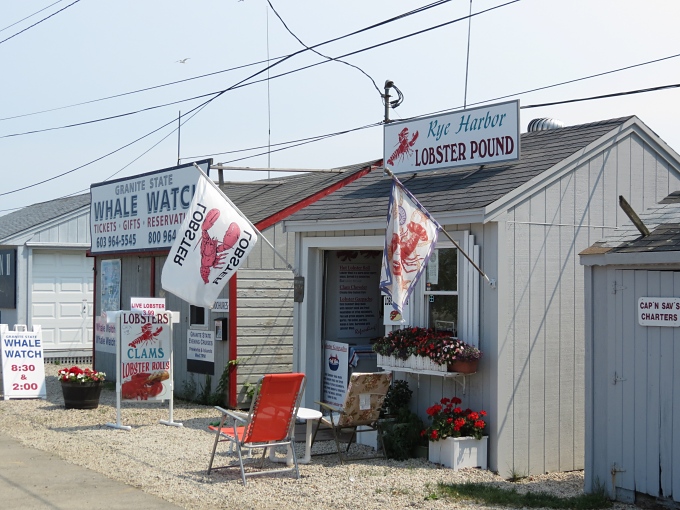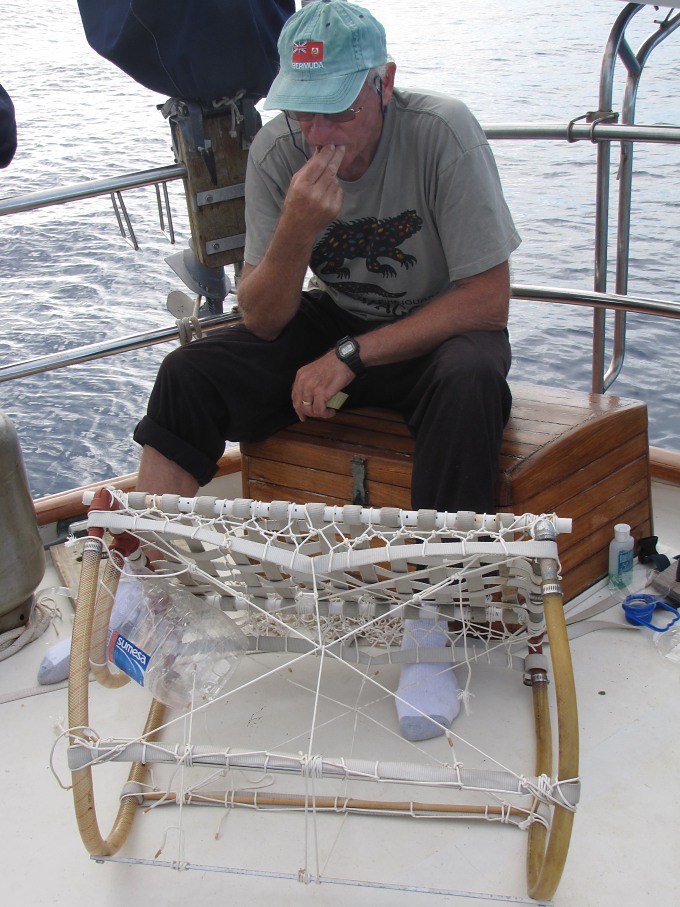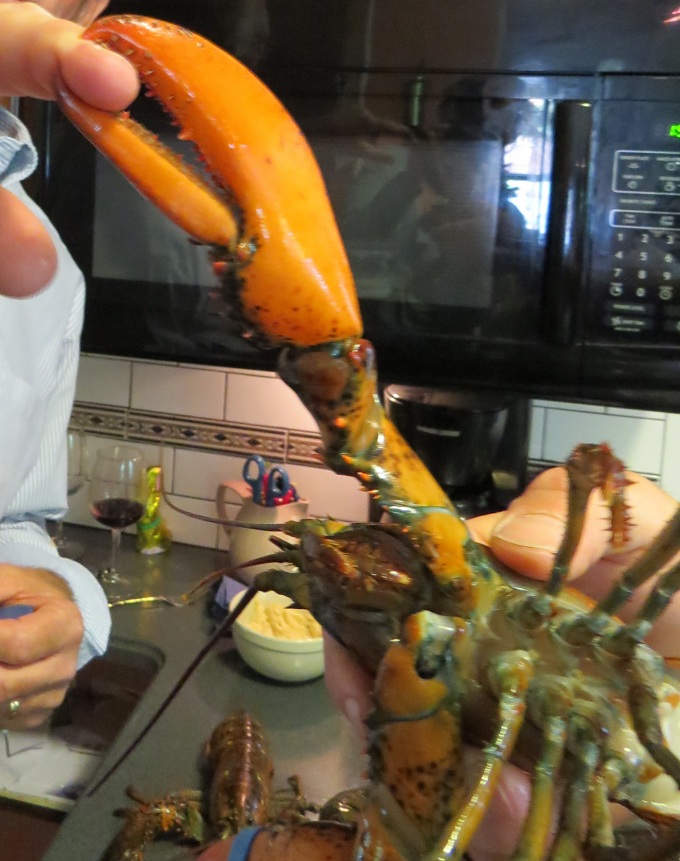Lobstah
/Yup, we're still in New England and where there's chowdah, there's also lobstah. Sometimes when people ask us why we're traveling around the world on a boat, we answer that we're just trying to sample lobster worldwide in order to figure out where we'd like to settle down. We do love lobstah.
Being brought up in Massachusetts, I don't remember not loving lobster or not knowing how to clean one. It's an art which I mastered early. I can remember a time when lobster was cheaper by the pound than hamburger, so the buying decision was easy. When I first met David who hails from Denver, he visited me in New Hampshire and I surprised him with two 2-pound beauties from the local lobster pound. I dove in and in my euphoric state, (think Darryl Hannah in “Splash”) it took me a minute or two to notice he wasn't eating.
"What's up? You don't like lobster?”
“I love lobster, but I've never had to clean one.”
Well, that was easy. I gave him a lesson in lobster cleaning 101 and there was no looking back. He quickly discovered that though I told him he might as well just give me the tail meat since there wasn't much to it, I was just giving him a hard time. He hasn't hesitated since and cleans a lobster down to the last morsel quicker than you can say “Pass the butter.”
In our travels, we've eaten Caribbean spiny lobster in the remote Islas Aves, where we traded lobster daily for charging a battery for the local fishermen. In the Cook Islands, we had another spiny lobster treat compliments of a local friend in the Omoka village. In Tonga, our friends at Matamaka Island gave us a huge lobster for dinner one Sunday after church, already steam-cooked in an underground umu. All these gifts were well-received to say the least and promptly devoured.
At Tristan da Cunha in the South Atlantic, lobstering is the main occupation of the islanders. Everyone participates in this delicately eco-balanced endeavor which keeps the island a financially self-sustaining British Overseas Territory. The lobsters are flash-frozen in the island's tiny processing plant and shipped by boat to South Africa where they fetch a pretty penny. Thanks to Tristanians, Andy and Lorraine Repetto, we left Tristan with a freezer full of Tristan lobsters. I dare say, we had had our fill (at least temporarily) by the time we reached Cape Town.
In Australia, we sampled Moreton Bay bugs, aka slipper or flathead lobsters. All lobsters are called “crays” or crayfish in Australia and the lobstermen there are called cray fishermen. Even the lobster traps are different than we're used to seeing in here in the USA.
In New Zealand, we sampled crays in Milford Sound, Fiordland when a local lobsterman offered us a couple of culls. While anchored in remote Port Davey, Tasmania, we heard a knock on the hull just around dusk. A local cray fisherman gave us two huge crays for dinner. He asked if we knew how to cook them? This born-and-bred New England girl had no problem answering that question and that generous gift was steaming in the pot in no time.
En route from Easter Island to Pitcairn Island in the South Pacific, David decided he'd construct a lobster trap out of whatever he could muster up on the boat and try his luck when we got to Pitcairn. No luck catching lobster, but it certainly did occupy quite a bit of his time on the passage.
The biggest difference we find between Maine or American lobster is the big, tender, succulent front claws which are absent on the spiny varieties. We think the cold-water lobster meat itself is sweeter than the tropical water varieties, too. But the sampling is not yet complete. We have the rest of the world's lobsters to try before making our final decision. So many lobsters … so little time.
Lobster trivia: In addition to the usual green-brown lobsters that turn red when cooked, there are also blue, orange and yellow anomalies. It appears they all turn red when cooked and they all taste the same. Really? You'd think if you were blue or yellow, they'd give you a break, huh?








